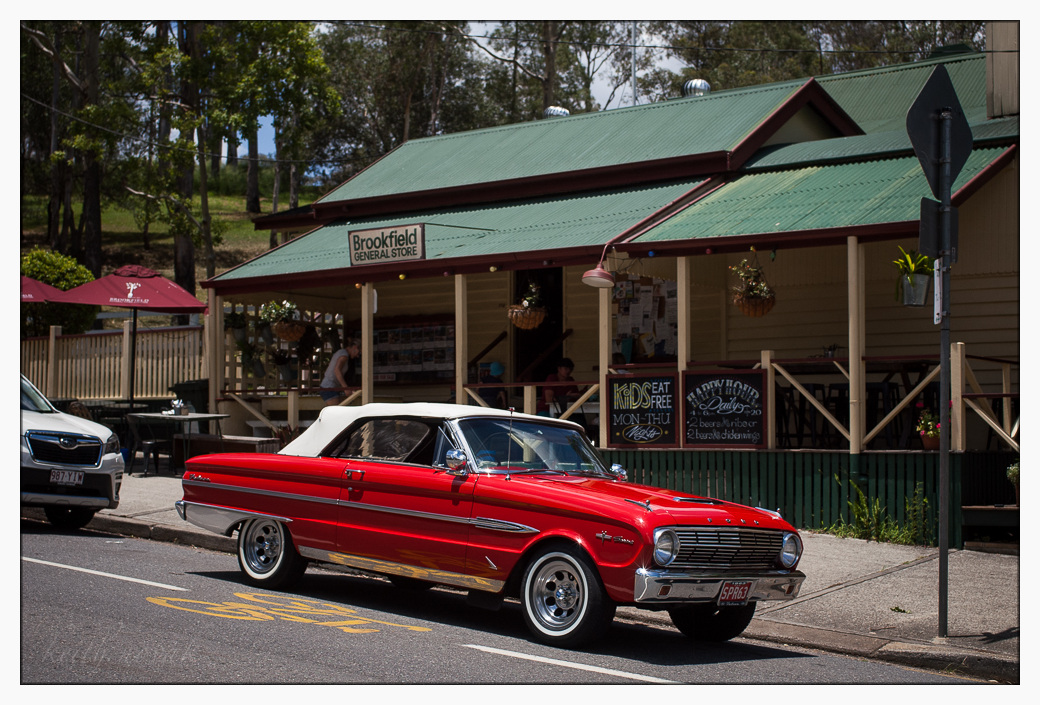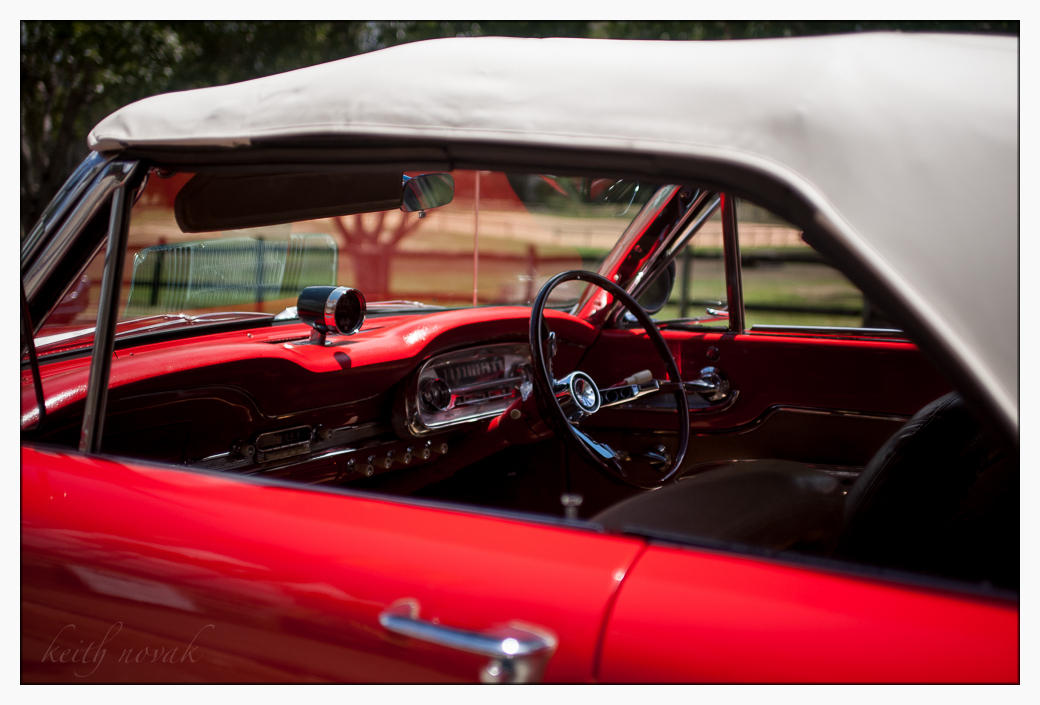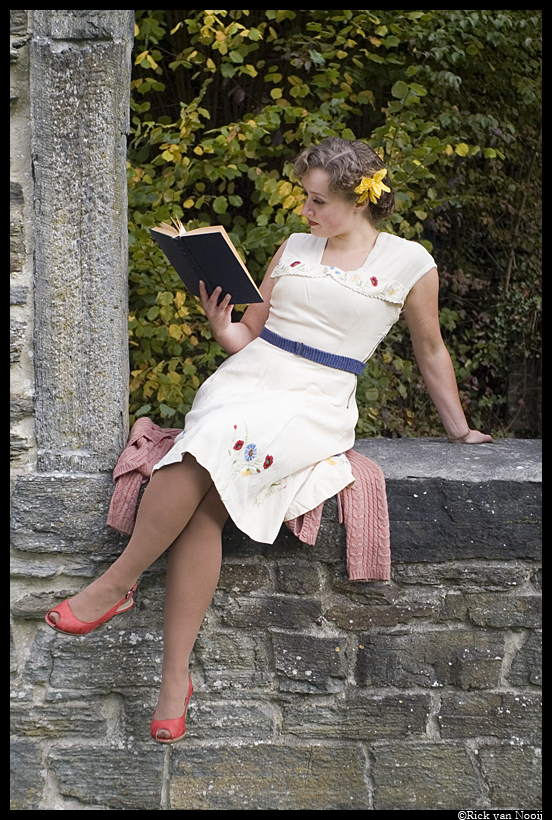Keith
The best camera is one that still works!
Reds in particular seem to be a struggle for some sensors. My D700 had issues when it still worked, I have a D4 that isn't much better and my 240 isn't really happy with reds either in my opinion. This pic is virtually straight out of the camera and considering the age of the old Epson, to my eyes it does a far better job than the afore mentioned cameras.




sepiareverb
genius and moron
M9 certainly has issues with red, as does the M10, to a lesser extent. I have often wondered why as well, especially when futzing around with the red hue and saturation sliders. The tech end of sensors being well above my capacity to follow I will hope someone can answer at my fourth grade level.
That image has stunning color. Reminds me of a dye transfer print without the contrast being so high.
That image has stunning color. Reminds me of a dye transfer print without the contrast being so high.
Out to Lunch
Menteur

Out to Lunch, on Flickr. I have often wondered why this is so, as well. Canada, June 2011. Epson R-D1 - Zeiss Biogon 2.8/28.
Keith
The best camera is one that still works!
I'll add that those pics were taken with a 35mm f2 Biogon ... which seems really happy on that camera.
Ko.Fe.
Lenses 35/21 Gears 46/20
Taste is different. All I see is typical picture from very old camera. With very limited something. Tones gradations or else.
Out to Lunch
Menteur
Surprising! This said, as Keith, I am eagerly awaiting a definitive tech answer.All I see is typical picture from very old camera. With very limited something
Benjamin Marks
Mentor
I don't have an answer, but when has that stopped me from chiming in? :hide:
Color is an intensely subjective and difficult subject. This is aggravated by digital images being viewed on millions of uncalibrated monitors on computers with different gamma settings, by millions of viewers, each with his own subjective sense of color, and bound by the confines of his or her own language to explain it. My own Roget's Thesauris lists over 100 synonyms for "red" alone. (my favorites from this morning's research: "carnelian" and "rubine")
I, for instance, on my uncalibrated HP laptop, don't see the remarkable red that you are talking about, Keith. But I assume that the camera has the qualities that you say it does, relative to your other gear. I also have a certain faith in this because, I know, from enjoying your posts on RFF over the years, that you are a talented "see-er" of the world, and a very able photographer, so I trust that you are accurately reporting what you see.
I know that lens choice can make a difference too. Zeiss lenses have a reputation for warmer tones than Leica's, for instance.
I am trying to think what data would demonstrate that there was a "there" there. Perhaps side-by-side pictures of the same scene, with different cameras but the same lens and all other settings identical, as far as you could make them? Tough, even then I think, as you still have the variability on my end with my crummy little laptop monitor.
Interesting question, though.
Color is an intensely subjective and difficult subject. This is aggravated by digital images being viewed on millions of uncalibrated monitors on computers with different gamma settings, by millions of viewers, each with his own subjective sense of color, and bound by the confines of his or her own language to explain it. My own Roget's Thesauris lists over 100 synonyms for "red" alone. (my favorites from this morning's research: "carnelian" and "rubine")
I, for instance, on my uncalibrated HP laptop, don't see the remarkable red that you are talking about, Keith. But I assume that the camera has the qualities that you say it does, relative to your other gear. I also have a certain faith in this because, I know, from enjoying your posts on RFF over the years, that you are a talented "see-er" of the world, and a very able photographer, so I trust that you are accurately reporting what you see.
I know that lens choice can make a difference too. Zeiss lenses have a reputation for warmer tones than Leica's, for instance.
I am trying to think what data would demonstrate that there was a "there" there. Perhaps side-by-side pictures of the same scene, with different cameras but the same lens and all other settings identical, as far as you could make them? Tough, even then I think, as you still have the variability on my end with my crummy little laptop monitor.
Interesting question, though.
css9450
Mentor
Could it be a CCD vs. CMOS sensor issue? I know there are certain lighting situations I prefer my 10-year-old D80 with its CCD sensor over my newer DSLRs which have CMOS sensors. And vice-versa.
Timmyjoe
Mentor
Could it be a CCD vs. CMOS sensor issue? I know there are certain lighting situations I prefer my 10-year-old D80 with its CCD sensor over my newer DSLRs which have CMOS sensors. And vice-versa.
Was wondering the same thing. Not familiar with the RD1, but does it indeed have a CCD sensor? Like Keith, I got very different color results from my CMOS D700/D4 combo when compared to the CCD sensor in my late Leica M8.2.
On a side note, the sensor in my Canon 6D, which is also a CMOS sensor, really punches up the Reds, so maybe it has more to do with the sensor design parameters from the manufacturer, than CMOS vs CCD. Not sure.
Best,
-Tim
Mr_Flibble
In Tabulas Argenteas Refero
I gave my Epson to a friend 3 years ago when I got the Leica M-E, but I do miss the colors I got with it. Maybe it's something to do with the Epson's software, protecting the highlights.

Epson R-D1 with VC 35mm 1.7 Ultron.

Epson R-D1 with VC 35mm 1.7 Ultron.
Rob-F
Likes Leicas
M9 certainly has issues with red, as does the M10, to a lesser extent. I have often wondered why as well, especially when futzing around with the red hue and saturation sliders.
Could it be a CCD vs. CMOS sensor issue?
But the M9 does have a CCD sensor. So that by itself can't be it. The sensors in the Epson and the M9, although both CCD, are not the same sensors (and have different processing engines). I imagine that has something to do with it.
Surely that CCD is in some other DSLR from the time period no?
Larry Cloetta
Mentor
Lovely Falcon, Unusually lovely reds as you noted.
Other than that, I’ve got nothing, but, even with my fondness for various CCD sensors, I don’t think that’s the answer in itself. Never had an RD-1 myself, so I can’t contribute, but will be curious as to what owners will say, as the topic is news to me.
RObert Budding
D'oh!
My D700 produced reds really well - as long as I didn't over-expose the red channel.
zane0777
Established
https://rangefinderforum.com/forums/showthread.php?t=160558
The 6 MP Sony CCD sensor has long been a favorite of mine.
The 6 MP Sony CCD sensor has long been a favorite of mine.
raid
Dad Photographer
While this may be an interesting issue from a sensor and technology perspective, any recent digital camera can produce images that end up having such reds with some PP. That red Falcon looks awesome, Keith.
B-9
Devin Bro
Surely that CCD is in some other DSLR from the time period no?
I believe that would be the Nikon D70/s
froyd
Mentor
My bet is that the secret sauce is the software. Epson sure nailed it on that camera. Foveon and R-D1 have my favorite colors in digital.
Steve M.
Mentor
This post illustrates the problem with digital stuff. What one person sees on their monitor is not what someone else sees, especially w/ colour On my monitor, that red car is an intense red. The rest of the shot behind the car has weak saturation, but that may be because of the lighting, or because it's not as sharply in focus as the Falcon. The convertible top is a very light subtle off white, cream colour that looks more like it came from a film camera than a digital.
The RD1 certainly is capable of making great images. If I shot digital, that would be my B&W camera.
Why does it make such good images? Maybe they had a batch of unusually good sensors for that production run, combined with the camera's software.
That's a Falcon Sprint w/ a 260 V8 (and hopefully 4 on the floor) by the way. My best friend in high school had one exactly like it, but his was blue w/ a white convertible top. I bought a beater 61 Falcon and swapped a Fairlane 289 into it, as well as the Fairlane's rear axle and differential to cover the extra HP. Had to shorten the drive shaft a bit and re weld it. These cars were fun, but w/ drum brakes on both ends stopping was a problem.
The RD1 certainly is capable of making great images. If I shot digital, that would be my B&W camera.
Why does it make such good images? Maybe they had a batch of unusually good sensors for that production run, combined with the camera's software.
That's a Falcon Sprint w/ a 260 V8 (and hopefully 4 on the floor) by the way. My best friend in high school had one exactly like it, but his was blue w/ a white convertible top. I bought a beater 61 Falcon and swapped a Fairlane 289 into it, as well as the Fairlane's rear axle and differential to cover the extra HP. Had to shorten the drive shaft a bit and re weld it. These cars were fun, but w/ drum brakes on both ends stopping was a problem.
willie_901
Mentor
The transition form CCD to CMOS technology is a convenient demarcation in the evolution of digital imaging. But this doesn't mean perceived rendering differences are directly related to technical differences between CCD and CMOS photo-diode arrays.
As Benjamin Marks mentioned color rendering is a very complicated issue. While perception preferences are authentic, it is difficult to make definitive conclusions about the basis for the differences.
There is no need to invoke CCD technology to account for personal preferences in color rendering. Color rendering differences between cameras can be caused by many factors. The CCD and CMOS design architectures and manufacturing processes are very different. But these differences have a negligible impact on color rendering compared to other sensor assembly hardware and demosaicking algorithm differences.
Both CCD and CMOS photo-diode arrays produce the exact same thing - photoelectrons. All photoelectrons are identical and they do not contain any inherent information about color.
The spectral response of CCD and CMOS photo-diode arrays are not identical. However the differences are small. It turns out typical CCD arrays are more sensitive to near IR and are slightly less sensitive to blue wavelengths. These differences are cause by physical fabrication differences before the light reaches the photo-diode.
However, the Nikon D100, D200, D40 and many other early digital cameras have CCD sensors. So superior perceived color rendering due to CMOS-CCD spectral response differences should be ubiquitous. This doesn't seem to be the case.
Other factors such as the transmission properties of the color-filter array assembly and the IR filter transmission properties can affect the relative number of photoelectrons generated R, G and B channels.
Here is the CFA spectral response for two Canon DSLR's. There is considerable overlap between the R, B and G filters. This produces contamination (cross-talk) between the three channels. When the CFA frequency response is narrower, less light reaches the photo diodes. But there is also less contamination. The opposite holds as well. Brands may have decided signal-to-noise was a more powerful marketing message than color rendition. So, older cameras (CCD) may have superior color rendering compared to newer cameras (CMOS) simply because the older CFA designs were optimized to maximize color rendering at the expense of SNR. Another important factor is smaller pixel pitches exacerbate the spectral cross-talk between photo sites. By coincidence CMOS cameras have smaller pixel pitches because resolution became a marketing priority as CMOS technologies matured.
The IR filter layer, the higher NIR spectral response of CCD photo diodes and the CFA red filter spectral response all impact the relative number of photoelectrons for the red channel. A strong IR filter could negate any increase in red signal levels due to CCD NIR response. If the spectral response of the red filters in the CFA was asymmetrical to include lower frequencies (NIR) the red channel signal levels could be relatively higher.
But wait, there's more.
During image rendering the camera color profile has a strong impact on perceived color rendering.
The Bayer demosaicking algorithm mathematical model assumes there is no color contamination between the R, G and B channels. Camera color profiles are used to model the unavoidable cross talk so the total demosaicking model matches the data. These correction models are proprietary. The practical aspects involved in optimizing a demosaicking algorithm mathematical model are complicated. Here is a nice review. As CFA cross-talk increases, the impact of the cross-talk correction models increases (link). The differences in perceived color rending between cameras will depend on color profile mathematical models.
As Benjamin Marks mentioned color rendering is a very complicated issue. While perception preferences are authentic, it is difficult to make definitive conclusions about the basis for the differences.
There is no need to invoke CCD technology to account for personal preferences in color rendering. Color rendering differences between cameras can be caused by many factors. The CCD and CMOS design architectures and manufacturing processes are very different. But these differences have a negligible impact on color rendering compared to other sensor assembly hardware and demosaicking algorithm differences.
Both CCD and CMOS photo-diode arrays produce the exact same thing - photoelectrons. All photoelectrons are identical and they do not contain any inherent information about color.
The spectral response of CCD and CMOS photo-diode arrays are not identical. However the differences are small. It turns out typical CCD arrays are more sensitive to near IR and are slightly less sensitive to blue wavelengths. These differences are cause by physical fabrication differences before the light reaches the photo-diode.
However, the Nikon D100, D200, D40 and many other early digital cameras have CCD sensors. So superior perceived color rendering due to CMOS-CCD spectral response differences should be ubiquitous. This doesn't seem to be the case.
Other factors such as the transmission properties of the color-filter array assembly and the IR filter transmission properties can affect the relative number of photoelectrons generated R, G and B channels.
Here is the CFA spectral response for two Canon DSLR's. There is considerable overlap between the R, B and G filters. This produces contamination (cross-talk) between the three channels. When the CFA frequency response is narrower, less light reaches the photo diodes. But there is also less contamination. The opposite holds as well. Brands may have decided signal-to-noise was a more powerful marketing message than color rendition. So, older cameras (CCD) may have superior color rendering compared to newer cameras (CMOS) simply because the older CFA designs were optimized to maximize color rendering at the expense of SNR. Another important factor is smaller pixel pitches exacerbate the spectral cross-talk between photo sites. By coincidence CMOS cameras have smaller pixel pitches because resolution became a marketing priority as CMOS technologies matured.
The IR filter layer, the higher NIR spectral response of CCD photo diodes and the CFA red filter spectral response all impact the relative number of photoelectrons for the red channel. A strong IR filter could negate any increase in red signal levels due to CCD NIR response. If the spectral response of the red filters in the CFA was asymmetrical to include lower frequencies (NIR) the red channel signal levels could be relatively higher.
But wait, there's more.
During image rendering the camera color profile has a strong impact on perceived color rendering.
The Bayer demosaicking algorithm mathematical model assumes there is no color contamination between the R, G and B channels. Camera color profiles are used to model the unavoidable cross talk so the total demosaicking model matches the data. These correction models are proprietary. The practical aspects involved in optimizing a demosaicking algorithm mathematical model are complicated. Here is a nice review. As CFA cross-talk increases, the impact of the cross-talk correction models increases (link). The differences in perceived color rending between cameras will depend on color profile mathematical models.
Share:
-
This site uses cookies to help personalise content, tailor your experience and to keep you logged in if you register.
By continuing to use this site, you are consenting to our use of cookies.

